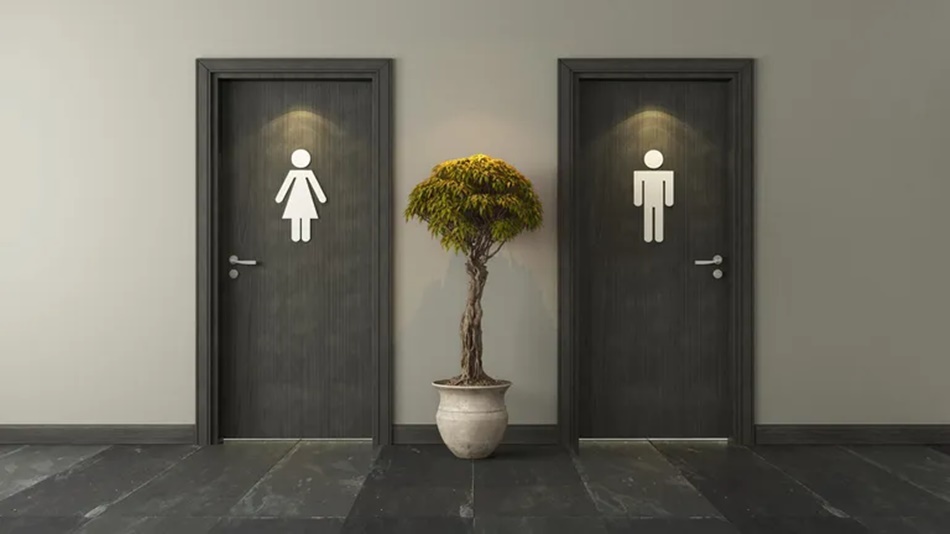What is incontinence and how is it treated?
How incontinence is diagnosed and treated / What is incontinence and how is it treated?

Constantly “having to”: People with incontinence often feel that their quality of life is severely restricted. Often an unnecessary suffering, because incontinence can be treated well in many cases. / What is incontinence and how is it treated?
“Pee your pants laughing” – for those affected by incontinence, this is more than a saying. If the pressure on the bladder is too great, it happens that urine leaks involuntarily. And that’s no laughing matter. Urinary control is affected in some people, while others have trouble holding stool. It doesn’t matter in what form: Incontinence is a taboo subject for many, which severely restricts the quality of life.
What is incontinence?
In the case of urinary incontinence, those affected are unable to control the passage of urine. How much urine is released, in which situations this happens, but also how stressful the situation is, differs from person to person.
Experts speak of faecal incontinence when the affected person cannot reliably hold stool and the contents of the bowel are released unintentionally. Fecal incontinence is defined using score systems and divided into degrees of severity. They are based on
how often per day or per week something like this happens and
how severe the incontinence event is, whether, for example, only air (wind incontinence) or mucus and liquid or even formed stool is released.
This results in a number from 1 to 20. The higher the value, the more severe the fecal incontinence.
What does it mean to be incontinent?
Those affected who live with fecal or urinary incontinence often feel very stressed, depending on the severity of the incontinence. Not being able to hold urine or stool is uncomfortable and often still a taboo subject. Many sufferers therefore refrain from activities that take place outside of the reach of a toilet. In severe cases, those affected even withdraw socially – which means a severe reduction in quality of life.
How does incontinence start?
A sneeze, coughing or jumping on the trampoline: there are various situations that can lead to incontinence events. In some cases, for example as a result of illness, injury or an accident, it is suddenly no longer possible for those affected to control the emptying of their bowels and bladder.
However, for most people, incontinence begins gradually. At first they only lose a few droplets during physical exertion, later also during light activities. In severe cases, (untreated) incontinence also occurs when the affected person is simply lying on the sofa.
Incontinence: typical symptoms
The pants don’t stay dry, although they should: The main symptom of incontinence is that urine or stool is released uncontrollably. Sometimes it’s just a few droplets, sometimes it’s a lot. In some sufferers, the bowel or bladder empty completely uncontrollably. Depending on the type of incontinence, there are other symptoms, such as an increased urge to urinate, pain, a foreign body sensation or the feeling that the bladder is never really empty.
forms of incontinence
Basically, different forms of incontinence can be identified. A distinguishing feature is the type of incontinence: In fecal incontinence, contents are released from the intestine voluntarily, whereas in urinary incontinence, urine flows out of the bladder uncontrollably. Urinary incontinence occurs in different sub-forms. professionals distinguish
stress incontinence,
urge incontinence,
overflow incontinence,
reflex incontinence and
extraurethral incontinence.
stress incontinence
Stress incontinence, also known as stress incontinence, is the most common form of urinary incontinence – especially in women. This is where urine flows out of the urinary tract when the pressure on the bladder is increased. This happens, for example, when sneezing, jumping, climbing stairs, coughing or running. The urethra cannot withstand this pressure and does not close properly, allowing urine to pass through.
urge incontinence
Those affected with urge incontinence, also known as urge incontinence or overactive bladder (OAB), often feel a strong urge to urinate, which they cannot suppress. If the pelvic floor is still weak, urination occurs before the person can reach a toilet.
reflex incontinence
People who suffer from reflex incontinence simply have no control over their urge to urinate. The bladder empties automatically. For example, this rare form is a result of malformed or injured nerve pathways that make it impossible to control the flow of urine.
overflow incontinence
In overflow incontinence, bladder and urethral pressure are not balanced. If the bladder is stretched too much, it will overflow until the pressure is equalized. It is annoying for those affected that there is always some residual urine in the bladder and it is never completely emptied.
Extraurethral incontinence
When urine leaks from an opening other than the urethra, experts speak of extraurethral incontinence. It is usually the result of malformations in the urinary tract.
What are the causes of incontinence?
Incontinence has very different causes. In the case of fecal incontinence, damage to the sphincter or anal skin, diarrhea, nerve damage, constipation or a weakened pelvic floor can be considered as triggers. The causes of urinary incontinence are also diverse and differ depending on the type of incontinence:
Causes of stress incontinence
The cause of stress incontinence is usually weakened pelvic floor muscles or damage to the ligament-holding apparatus. Both lead to the urethra no longer closing reliably. This often happens as a result of pregnancy and vaginal birth, which puts a lot of strain on the pelvic floor. Therefore, this form of incontinence occurs particularly often in women. Being overweight and constant overload, for example due to heavy physical work, are risk factors that promote stress incontinence.
In men, stress incontinence occurs, for example, as a result of prostate cancer surgery or prostate reduction surgery.
Causes of urge incontinence
In women, urge incontinence often occurs as a result of pregnancy and childbirth, but also as a symptom of old age. Other possible causes of an overactive bladder are a hormone deficiency, urinary tract infections or bladder stones, tumors and neurological diseases such as Parkinson’s or dementia.
Causes of reflex incontinence
When the neural pathways between the brain and spinal cord that control bladder control are dysfunctional, the bladder empties automatically and without conscious control. In some people, the neural pathways are malformed from birth. For others, they were damaged by an accident or illness.
Causes of overflow incontinence
If the bladder “overflows”, this is usually due to damage to the bladder nerves, for example after an operation. Malformations or narrowing of the urethra can also be the cause of this form of incontinence.
Causes of extraurethral incontinence
The most common cause of extraurethral incontinence are so-called fistulas, which sometimes occur, for example, after inflammation or bladder injuries. A fistula is an unnatural, tube-like connecting channel that can form between two organs or an organ and the skin for a variety of reasons. In the case of extraurethral incontinence, the urine does not flow out naturally, but via the fistula.
How is incontinence diagnosed?
There are several methods to diagnose incontinence. Patients with urinary incontinence often keep a drinking and micturition log in which they record when and how much they have drunk and when they have to go to the toilet.
In the so-called pad test, the amount of urine lost during physical activity is measured: the patient recovers an incontinence pad, which is weighed beforehand. Then she or he drinks a large amount of liquid. After a period of time, the person must perform various exercises, such as coughing, jumping, and running in place. After the test, the incontinence pad is weighed again. This allows you to determine exactly how much liquid has escaped.
In addition, in the case of incontinence, a cystoscopy and – in women – a vaginal examination may be carried out.
With the help of a so-called urodynamic measurement (urodynamics), the flow of the bladder, the control by the nerves and the pressure that prevails during urination can be measured.
A physical exam is usually followed by an ultrasound scan and a colonoscopy to diagnose fecal incontinence.
treat urinary incontinence
The suffering of patients with bladder weakness is often great. However, there are a number of ways to treat incontinence. The treatment of urinary incontinence depends on the form and cause of the bladder weakness:
Treatment of stress incontinence
In the case of mild forms of stress incontinence, targeted pelvic floor exercises already relieve the symptoms. A strengthened pelvic floor helps to gain control of urine and stool. In addition, some people with stress incontinence use drugs with the active ingredient duloxetine to relieve the symptoms. Women who suffer from a severe form of stress incontinence have the option of having a plastic band inserted into the urethra. This makes it easier to check urine.
Pelvic floor exercises and the insertion of banding materials to support the urethra and bladder sphincter are also treatment options for men with stress urinary incontinence. In severe cases, affected men are fitted with an artificial bladder sphincter. Since stress incontinence in men often occurs as a result of prostate surgery, surgeons always try to operate in a manner that is gentle on the bladder.
treatment of urge incontinence
In order to treat urge incontinence, the cause, such as other diseases or an existing hormone deficiency, is first researched and treated. If no cause can be identified, medications are used to treat urge incontinence, which reduce the activity of the bladder muscle and thereby alleviate the feeling of constantly “having to”. An alternative is the active ingredient botulinum toxin, known from anti-wrinkle treatment, commonly known as Botox, which is injected into the bladder of people with incontinence to relax it.
Other treatment methods include bladder training, so-called biofeedback and electrostimulation treatment. These therapies help people regain bladder control without drugs or surgery.
In addition, disposable panties, so-called pants, are important aids for incontinence to discreetly collect stool or urine.
Treatment of fecal incontinence
In the case of fecal incontinence, an attempt is also made to treat the cause first. If this is not possible or not sufficient, other treatment options are available, for example bowel movement regulation, pelvic floor exercises and surgical interventions that enable continence again.
Incontinence: what you can do yourself
In most cases, to treat incontinence, anyone can take action themselves – literally. Because the most important method of improving the retention of stool and urine is pelvic floor training. There are a variety of exercises that train the pelvic floor and specialized centers that teach them.
In addition, a healthy lifestyle helps to maintain and improve continence. This includes, above all, avoiding or reducing obesity. Extra pounds increase pressure on the bladder and strain the pelvic floor. In addition, experts recommend avoiding diuretic drinks such as coffee and black tea and drinking more in the morning than in the evening.
Panic attack: Symptoms and treatment
These symptoms indicate pinworms
The rubella virus can cause these symptoms



